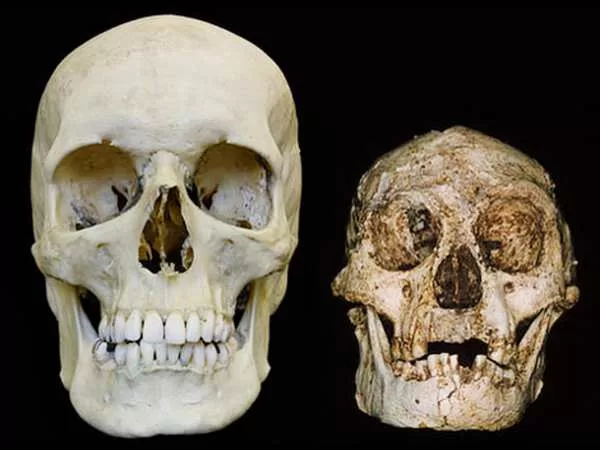A groundbreaking discovery on the Indonesian island of Flores is reshaping our understanding of the tiny, enigmatic “hobbits” that once roamed there. Recent research, published in Nature, reveals that the evolutionary history of Homo floresiensis—the so-called hobbits—extends back a full million years, far earlier than previously believed.
New Evidence Uncovers a Longer History
The hobbit mystery began in 2004 with the discovery of bones belonging to a diminutive human-like species on Flores. This three-foot-tall (one-meter-tall) individual, weighing just 55 pounds (25 kilograms) and possessing a grapefruit-sized brain, was later classified as a new species, Homo floresiensis. Despite the spread of modern humans across the globe, these hobbits persisted on the remote island until about 18,000 years ago.
The recent study, led by Adam Brumm from the University of Wollongong in Australia, uncovers stone tools found in volcanic sediments on Flores. These tools, dated to around a million years ago, consist of simple, sharp-edged flakes similar to those found at other Flores sites associated with the hobbits and their ancestors. Brumm’s team suggests that this discovery pushes back the timeline for the presence of stone-tool-using humans on Flores by 200,000 years, significantly altering our understanding of early human migration and adaptation.
Implications for Human Migration
The new findings have significant implications for the history of human migration from Africa. Chris Stringer, a paleontologist at the Natural History Museum in London, who was not involved in the study, commented, “This is exciting because it suggests early humans had already spread farther from Africa than previously thought.”
Previously, it was believed that ancestors of the hobbits, likely a species of Homo erectus, arrived on Flores around 880,000 years ago. The new evidence suggests that these early settlers arrived much earlier and lived on Flores for a much longer period. This revised timeline implies that the role of these early inhabitants in the extinction of local species, such as pygmy elephants and giant tortoises, may have been less significant than previously assumed.

Reassessing the Hobbit Ancestors
The discovery of these ancient tools also raises questions about the relationship between Homo floresiensis and its ancestors. While initial theories proposed that the hobbits descended from Homo erectus, the new findings suggest a more primitive lineage. Brumm’s study indicates that the early settlers could have been more primitive than Homo erectus. This challenges earlier assumptions and suggests that the hobbits may have descended from a more archaic ancestor.
Stringer and other scientists have noted that the anatomical features of the hobbits—such as their wrist, feet, skull, jaw, and brain—point to a lineage that diverged from Homo erectus more significantly than previously recognized.
Controversy and Debate
Despite these intriguing revelations, not all experts agree with the new findings. Anthropologist James Phillips from the University of Illinois at Chicago expresses skepticism about the dating of the stone tools. Phillips argues that the presence of artifacts in million-year-old volcanic sediments does not necessarily mean the tools are that old. He also questions the assumption that stone-tool technology remained static for over a million years on Flores, suggesting that technological change might have occurred even if it was slow.
Phillips, along with others in the field, remains critical of the claim that Homo floresiensis is a separate species. Some researchers have proposed alternative explanations, such as the possibility that the hobbits were modern humans with a genetic condition leading to dwarfism and other abnormalities.
The Journey to Flores
Another significant question is how these early humans arrived on Flores. Stringer supports a theory that suggests the migration might have involved a combination of land and sea travel. According to this theory, early humans could have traveled from Africa to Sulawesi, another Indonesian island. There, they might have been swept to sea by a tsunami, and currents could have carried them to Flores.
To support this theory, researchers are currently seeking evidence on Sulawesi that would indicate human presence on the island prior to their arrival on Flores. This would help to establish a more comprehensive picture of how ancient humans dispersed across the Indonesian archipelago.
Conclusion
The latest research on Flores offers a fascinating glimpse into the early history of human migration and adaptation. The newly discovered stone tools not only push back the timeline of human presence on the island but also challenge existing theories about the hobbits’ ancestry and their impact on the environment. As scientists continue to unravel the mysteries of Homo floresiensis, these findings enhance our understanding of the complex tapestry of human evolution and migration.

